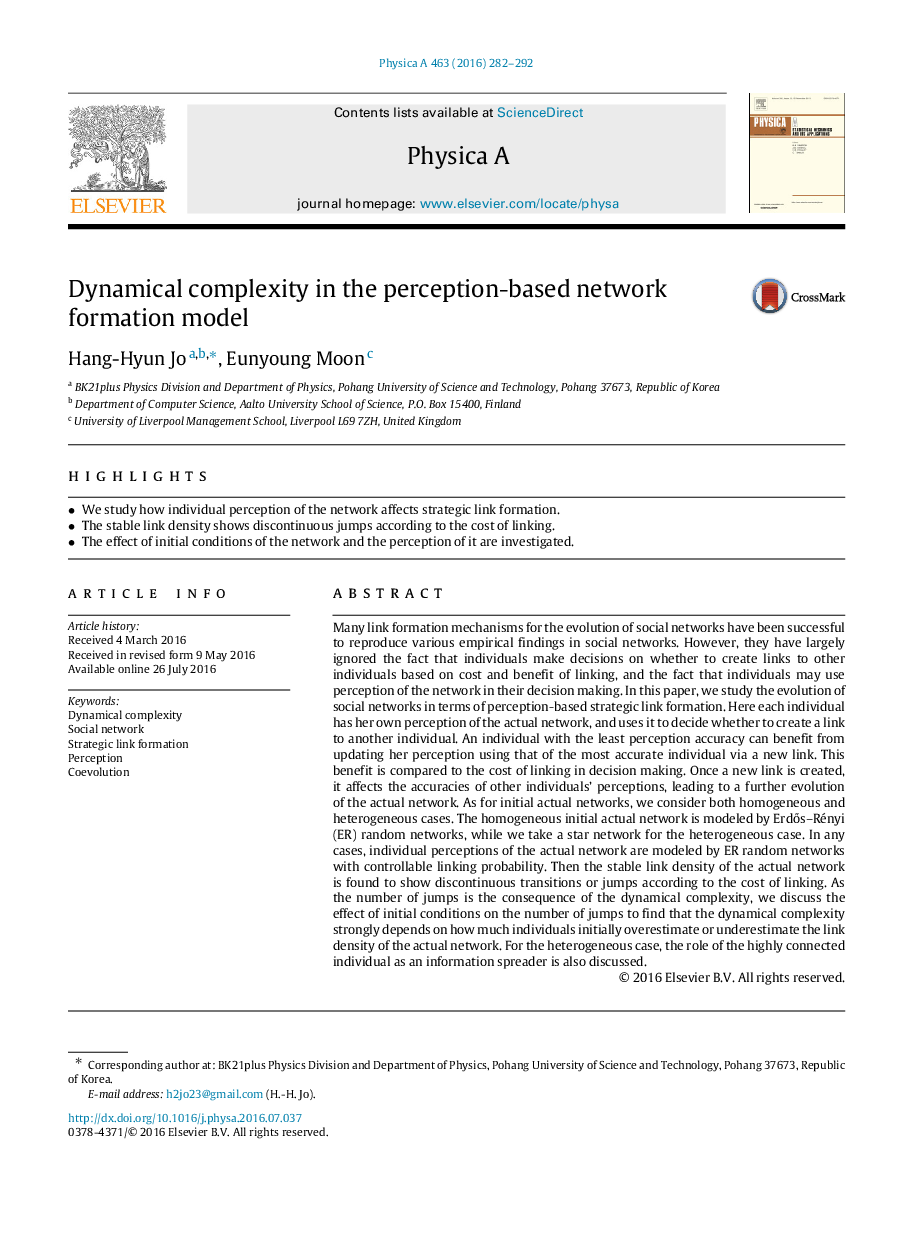| کد مقاله | کد نشریه | سال انتشار | مقاله انگلیسی | نسخه تمام متن |
|---|---|---|---|---|
| 973970 | 1480110 | 2016 | 11 صفحه PDF | دانلود رایگان |
• We study how individual perception of the network affects strategic link formation.
• The stable link density shows discontinuous jumps according to the cost of linking.
• The effect of initial conditions of the network and the perception of it are investigated.
Many link formation mechanisms for the evolution of social networks have been successful to reproduce various empirical findings in social networks. However, they have largely ignored the fact that individuals make decisions on whether to create links to other individuals based on cost and benefit of linking, and the fact that individuals may use perception of the network in their decision making. In this paper, we study the evolution of social networks in terms of perception-based strategic link formation. Here each individual has her own perception of the actual network, and uses it to decide whether to create a link to another individual. An individual with the least perception accuracy can benefit from updating her perception using that of the most accurate individual via a new link. This benefit is compared to the cost of linking in decision making. Once a new link is created, it affects the accuracies of other individuals’ perceptions, leading to a further evolution of the actual network. As for initial actual networks, we consider both homogeneous and heterogeneous cases. The homogeneous initial actual network is modeled by Erdős–Rényi (ER) random networks, while we take a star network for the heterogeneous case. In any cases, individual perceptions of the actual network are modeled by ER random networks with controllable linking probability. Then the stable link density of the actual network is found to show discontinuous transitions or jumps according to the cost of linking. As the number of jumps is the consequence of the dynamical complexity, we discuss the effect of initial conditions on the number of jumps to find that the dynamical complexity strongly depends on how much individuals initially overestimate or underestimate the link density of the actual network. For the heterogeneous case, the role of the highly connected individual as an information spreader is also discussed.
Journal: Physica A: Statistical Mechanics and its Applications - Volume 463, 1 December 2016, Pages 282–292
